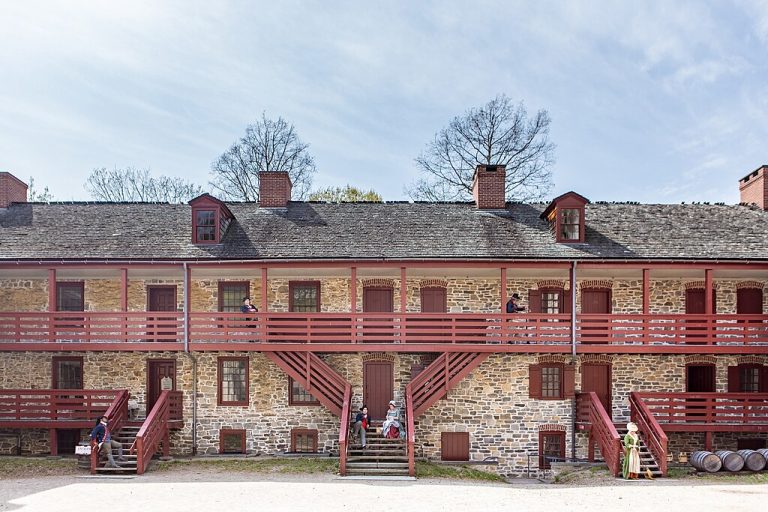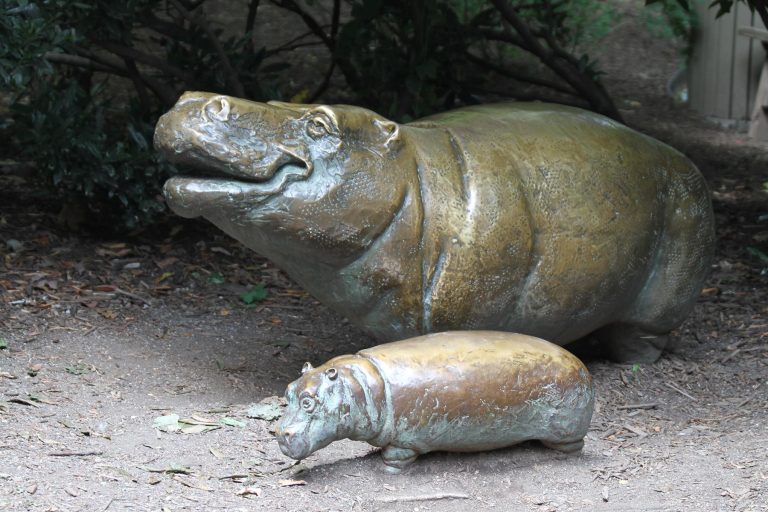If you’re searching for school field trip destinations that will engage and excite your students, look no further – here are 10 state parks for students full of thrilling learning opportunities
When planning a field trip for your students, ensuring the destination is able to provide them with experiences that are both educational and stimulating can be a difficult task. Luckily, these selected state parks for student travel feature expansive displays of biodiversity, dynamic geography and geology, promotions of green practices, and deep histories that are sure to both inform and fascinate students of all ages.
Whether your group is hiking park grounds or participating in ranger-led programming, each park on this list has an abundance of unique attractions and qualities that ensure a more than worthwhile trip. This is your guide to ten state parks that are fantastic for school trips.
Oak Mountain State Park, Alabama
Being Alabama’s largest state park means that Oak Mountain has plenty to offer visiting students. Your class can take part in guided field trips centered around the park’s wildlife and greater environment or explore nature through hiking while getting the chance to admire landmarks like Peavine Falls. Oak Mountain State Park’s engrossing educational opportunities paired with its beautiful scenery make it one of the best state parks for student travel.

Biodiversity and ecology
Oak Mountain’s field trip options are a fantastic way to immerse your students in the park’s wildlife. Visiting classes can learn about why the state’s diverse ecosystem is important, meet live box turtles, play a game revolving around conservation and species population, or view birds of prey on the elevated Treetop Nature Trail Boardwalk. The park also houses the Alabama Wildlife Center, a spot that has cared for animals for over 45 years and which seeks to increase visitors’ appreciation of Alabama’s wildlife.
Environmental science
Other tours focus on the park’s environment as a whole and can involve students taking part in an interactive program about the water cycle and pollution or exploring the Oak Mountain Interpretive Center, where naturalists will teach them about how Alabama is biologically, geologically and ecologically unique. The Interpretive Center is also an interactive exhibit space that features live animals and history artifacts.
Geology and geography
Aside from the park’s guided programs, Oak Mountain also has over 100 miles of trails that students can use to further experience nature and check out the park’s greater landscape firsthand. Paths like the White Trail take you to Shackleford Point, the highest place in the park, while the Lake Trail provides picturesque views of Double Oak Lake. The 65-foot tall naturally fed waterfall Peavine Falls is a popular spot as well, with multiple paths leading to this site.
Cumberland Mountain State Park, Tennessee
Located on the Cumberland Plateau, Cumberland Mountain proves to be a great state park for student travel through activities that are sure to enthuse visiting groups. Learners can take part in park events that focus on the area’s biodiversity or admire that life alongside the distinctive geologic structures and geography found on the park’s numerous hiking trails. This park has everything your students need to have a quality day of learning and adventure.
Biodiversity and ecology
- For educators looking to give their students exciting learning opportunities, Cumberland encourages its ranger-led park programs that cover topics like general biology, animal adaptations and keystone species, and outdoor recreation. If you have a different subject or lesson plan in mind for your students, park rangers will work with you to craft your ideal program.
- Cumberland Mountain’s park events are another way your students can gain a guided experience through the park’s wildlife, with programs that consist of finding pollinators, making recycled bird feeders, and meeting local animals like the eastern screech owl that put further emphasis on the role these creatures play in the surrounding environment.
- Outside of guided activities, learners are sure to notice the park’s bird population as they hike around the region. The time of year will determine which of the 105 observed bird species they’ll spot, as wintering and migration practices typically bring herons and ducks to the park while the summer tends to attract species like warblers and vireos, though plenty of birds still inhabit the park year-round as well. Certain trails also highlight plantlife, including mountain laurel, rhododendron, and pink lady’s slippers.
Environmental science
Drawing your students’ attention to this school field trip destination’s green practices prior to visiting is a great way to heighten their awareness about environmental preservation and sustainability. The TN State Parks Go Green With Us program serves to preserve and protect state parks by taking part in energy and water conservation practices, recycling programs, and erosion control. While these initiatives may not be readily apparent to visiting students, pointing out sites like the 300 trees planted near Byrd Creek and their purpose, to minimize erosion, can add a deeper understanding to the beauty found within the park. If you’re hoping for your students to be more directly involved in these sustainable practices, check the park events calendar to see if a creek clean-up is approaching.
Geology and geography
The park has approximately 14 miles of hiking trails that will take students on adventures around Byrd Creek, Byrd Lake, and dense forests. As your class navigates these geographical staples, they may see rock overhangs and unique rock outcroppings, enjoy quality views from the overlook known as picnic rock, or travel through a treetop canopy of hemlock trees that is accompanied by cooler temperatures and less vegetation.
Black Rock Mountain State Park, Georgia
Reaching altitudes of up to 3,640 feet, the highest state park in Georgia has striking views of nature for students to get lost in. Hiking trails will show off Black Rock’s unique geography, long-stretching vistas, and rich biodiversity, while park programming can help your students look more closely at the wildlife inhabiting the area. A field trip to this state park for student travel will not only interest and inspire your learners in the moment, it will leave them wanting more afterward.

Biodiversity and ecology
- Hiking provides students with a chance to observe the life inhabiting Black Rock. The Ada-Hi Falls Trail features plenty, with the trail displaying hardwoods, lichen-covered rocks, multiple ferns and wildflowers, and a thicket of rhododendron. The Black Rock Lake Trail has some distinct wildlife to show off as well, showcasing a 160-foot wooden boardwalk that provides views of many fish species, including bass, beam, catfish, yellow perch and rainbow trout.
- Park events can provide further insight on the ecosystem, with programs centered on coexisting with black bears, naturalists discussing animals you may spot on your hikes, and celebrating occasions like World Snake Day or National Wildlife Day.
Geology and geography
- Black Rock’s hiking trails are also a perfect way for students to immerse themselves in the park’s physical environment. James E. Edmond Trail will take them into laurel-filled coves, where they will walk alongside cascading streams and small waterfalls before climbing to Lookoff Mountain’s summit and getting a stupendous view of the surrounding mountain ranges. The park’s most popular hike, the Tennessee Rock Trail, winds through lush forests, connecting students with the woodlands and showing off vistas that span into North Carolina, South Carolina and Tennessee, plus the effects from a tornado are visible on the trail’s western edge.
Pinnacle Mountain State Park, Arkansas
Located just west of Little Rock, Pinnacle Mountain is the centerpiece of this state park for school trips. The park has plenty of adventures awaiting your students, with opportunities to view vast selections of wildlife and plants, take part in guided activities that journey deeper into specific organisms, and experience striking views of nature during hikes around the land. The park website’s information brochure has further descriptions of the educational services available for visiting students and additional details that will help you craft a memorable field trip.
Biodiversity and ecology
- Many programs are held at the Visitor Center, giving students an in-depth view of the park’s natural elements. The Discovery Room has a wildlife viewing window, animal displays, and hands-on exhibits, while the Environmental Education Pond focuses on aquatic studies, fishing clinics, and further wildlife observation.
- Students can continue to view wildlife along with plant life in the Native Plant Gardens, where native flower gardens, butterfly gardens and a native flower meadow bring in numerous creatures, and the Arkansas Arboretum, which has interpretive exhibits along with native shrubs and trees from all over the state. Tours are available for an even closer look at the forest and tree species.
- Park events are another way for students to explore Pinnacle Mountain’s biodiversity, with programs focused around insects, macroinvertebrates, raptor viewing, and birding.
Geology and geography
- Pinnacle Mountain’s geography can be inspected by your class on the park’s many hiking trails. Students can travel on paths that cross through the floodplain of the Little Maumelle River, upland forest and floodplain hardwoods, boulder fields, or the edge of the Big Maumelle River. Along with this dynamic geography, different hikes will also lead to overlooks with breathtaking views of spots like Lake Maumelle, the Arkansas River Valley, and more.
History and cultural significance
- In addition, this state park is a certified Trail of Tears National Historic Site due to many Indigenous groups being forcefully removed from the land. While there aren’t any park programs centered around this subject, students can still use their visit combined with this knowledge to engage in reflection over the many people who unjustly suffered in relation to this territory.
Smith Mountain Lake State Park, Virginia
Located on the second largest freshwater lake in the state, Smith Mountain Lake State Park is a spectacular school field trip destination. Ranger-led programs will teach your students about various nooks of the park’s biodiversity, while Smith’s many hiking trails show off remnants of park history dating back to the 18th century as well as the many different physical features that form the park’s greater environment. Your students will have a packed day of learning and awe when they visit Smith Mountain Lake State Park.

Biodiversity and ecology
- Smith has a terrific selection of ranger-guided programs that will teach students all about the park’s biodiversity. Lessons can involve learning about Virginia’s two fox species, viewing osprey activity on a cam and hiking to a nest, observing Smith Mountain Lake’s different species of fish, or finding out more about animal tracks and other signs that indicate animal activity.
- For younger students, the Sum of Its Parts is a ranger-guided drawing activity that looks at the individual parts of a unique animal native to Virginia and lets participants take home the artwork they create. Smith Mountain Lake’s broad selection of wildlife is a great way for students to comprehend the intricacies of a park’s ecosystem.
Geology and geography
- The park displays the diversity of its land through its 13 hiking trails that run through various geographic features. The Buck Run Trail has striking views of the park’s deepest cove, Beechwood Trail brings hikers through a hardwood forest while following creeks heading into the lake, Osprey Point Trail has views of the lake on one side and igneous rock formations on the other, Striper Cove Trail moves through changing woodlands, and Turtle Island Trail has interpretive signs about the forest’s changes and adaptations before you encounter the bridge to Turtle Island, which physically resembles its namesake.
- Smith’s trails consist of many different geographic and geologic features, yet their coexistence can show students more about the park’s interconnected nature. In addition, although it requires a reservation a week beforehand, the historical pontoon boat tour travels the shores of the lake and delves into the history of the lake’s creation and the park’s beginnings.
History and cultural significance
A few of the park trails found within this school field trip destination give students a look into the region’s history. Walton Creek takes hikers near the oldest foundation found in the park, the Moody Meeting house stone foundation built in 1790, the Beechwood Trail offers a look at Peach and Alice Maxey’s old home, and the Osprey Point Trail’s path goes alongside a stone fence built in the early 1800s.
Smith Mountain Lake State Park, Huddleston, Virginia. Photo Credit: Virginia Department of Conservation and Recreation
Monadnock State Park, New Hampshire
Found in and around the 3,165-foot Mount Monadnock, this park is surrounded by thousands of acres of protected highlands and was named a National Natural Landmark in 1987. Along with programming about wildlife, geology, and environmental science held throughout the summer and into the fall, the park’s Educator’s Guide has background information, safety tips, and an activity for students to complete as they climb the mountain. Since parking is limited, look into making a reservation so your students can enjoy their trip without delay.

Biodiversity and ecology
The park has regular programs held throughout each week from late June to mid-October, many of which focus on the wildlife found throughout the park. Students can learn about New Hampshire foxes while examining fox pelts and skulls, the ways in which we can safely coexist with bears in the park, the activities of bats native to the area, and details about owl species found in this region.
Environmental Science
Monadnock State Park is partnered with the Monadnock Ecological Research and Education (MERE) project, which, among many other objectives, conducts ecological research to monitor the impact of climate change on Mount Monadnock’s natural communities. The Educator’s Guide provides a corresponding scavenger hunt that seeks to help students understand climate change and the ways it can affect the biodiversity of a mountain ecosystem, starting before students embark on a hike up the mountain and concluding at the mountain’s top. Some of this school field trip destination’s programs also cover environmental subject matter as well, exploring the impact humans can have on the park and the weather patterns that occur around a mountain like Monadnock.
Geology and geography
Several park programs revolve around the park’s landscape, allowing students to learn more about Monadnock’s unique rock formations, the park’s geology, and how trails are made. There’s also a self-guided hiking option that starts students at the Visitors Center, where they’ll find the park’s very own Ranger Kyle and discuss the mountain’s history before going off on their own.
Monadnock State Park. Photo Credit: NH State Parks
Quartz Mountain State Park, Oklahoma
There’s a good reason this gateway to the Wichita Mountains has brought in generations of visitors. Built as a part of FDR’s New Deal, Quartz Mountain State Park has grown into a destination with great activities that will engross visiting students. The park’s online guides are the best way to engage with its many diverse elements, from the plethora of wildlife present to the history and science behind the scenic views that classes will encounter.
Biodiversity and ecology
- Plantlife is a notable element of Quartz Mountain State Park. While many trees and shrubs at the park can also be seen across Oklahoma, there are a handful that can only grow in the portion of the state where Quartz Mountain is located. Illustrations of these species in the park guide can help students identify them during a visit, plus there are details about growth cycles and plant interactions with animals and the surrounding land, highlighting the greater workings of the park’s ecosystem. This state park for student travel also provides growing conditions for almost 80 species of wildflowers. The guide to these native species includes illustrations and information on those most frequently seen by the public, and field trips visiting during the spring or summer will likely spot many of these flowers along the park’s New Horizon Trail or roadsides.
- Wildlife is an element of Quartz that is more elusive due to many local animals being nocturnal, rare, stealthy, or camouflaged, but students can still spot traces of these creatures during a visit. The wildlife brochure emphasizes how tracks can be found at the park that evidence specific animals, including white-tailed deer, bobcats, opossums, striped skunks, and coyotes. Attached drawings of these footprints let students engage in independent investigation, searching for clues as they hike the area.
- Birds are an additional draw of Quartz Mountain State Park. Depending on which parts of the park your students visit, different species will be seen on the actual mountain compared to spots like the river banks and lakeshore. There are guides to both residing species and visiting species available, highlighting how one place can support so many different birds.
Geology and geography
The park website also features a guide about Quartz’s geological history, which began millions of years ago. Students can learn about the evolution and changes that Quartz Mountain has endured over so many time periods and consider the many effects of natural processes on such a structure, even with a lack of human activity. The guide goes on to answer questions about the mineral quartz, other components of the mountain, and the range Quartz Mountain belongs to, the Wichita Mountain range.
South Mountain State Park, Maryland
South Mountain State Park is 40 miles long and weaves along the South Mountain Ridge from the Pennsylvania line to the Potomac River. Upon arriving at the park, students will get chances to see a variety of wildlife, memorable views of the landscape on hiking trails, and the site of an important Civil War battle accompanied by exhibits that all make South Mountain an ideal school field trip destination.
Biodiversity and ecology
The park’s 13,000-acre forest has a rich diversity of life that will certainly get students’ attention. The area is called home by many different animals, including whitetail deer, meadow voles, rat snakes, opossums, and black bears. Hawks, eagles, and owls may also be spotted by visitors due to South Mountain being located along the Eastern Flyway, a migration route for these types of birds.
Geology and geography
South Mountain’s hiking options along the Appalachian Trail will better expose your class to the area’s build. Around 40 miles of the Appalachian Trail are found in Maryland, and most follow South Mountain’s ridgeline. Annapolis Rock provides views of Greenbrier Lake and Cumberland Valley, while Weverton Cliffs gives a view of the Potomac River. These hiking options along the Appalachian Trail will help students better understand the park’s geography while simultaneously stunning them with its scenery.
History and cultural significance
This park is home to the South Mountain State Battlefield, a site that aims to preserve Maryland’s first major Civil War battle fought in 1862. The battle was one of two Union victories that pushed Lincoln to issue the Emancipation Proclamation, and the grounds it took place on hold a lot for visiting students to explore. The Washington Monument Visitors Center has a summary of the 1862 Maryland campaign and a fiber-optic map of the battle, while museums and wayside exhibits can be found around the area that cast light on more details and individual figures involved in the event.
Buckskin Mountain State Park, Arizona
Located along the Colorado River, this school field trip destination is distinguished by its dry and sunny weather as well as its marvelous geology. A great deal of Buckskin’s animals and vegetation reflect this environment, wildlife that students can observe as they travel around the park and learn more through exhibits centered around these inhabitants. Described as a desert escape, this park has more than enough to capture your class’s attention.

Biodiversity and ecology
- Buckskin has a vast selection of desert wildlife along with different bird species populating its grounds that students can observe, from creatures that live in the park year-round to ones that migrate or simply pass through now and then. Students may catch sight of snakes, desert lizards, bighorn sheep, bobcats, coyotes and badgers, plus the Colorado River being an important avian flyway means osprey, hawks, merlin, pelicans, owls, and three different hummingbird species are just a selection of the park’s overall bird inhabitants.
- The park’s vegetation that is fostered by the warmer environment includes cottonwood, willows, and cattails, plus the spring can yield wildflowers after a wet winter. Perhaps most notable is the Pholisma arenarium, or scaly sandplant, a rare plant in the area that looks like a pinecone growing out of the sand. Beyond this observation, the Contact Station and Visitor Center have exhibits that dive further into the local flora and fauna, and surrounding park staff are more than happy to share additional information about these diverse populations.
Geology and geography
Besides its dry climate, Buckskin is further distinguished by the natural arches and bridges found around the park. The park’s hiking trails will give students a better picture of the area, as, aside from the diverse ecology, these paths can lead into a western Arizona mountain range, pass by abandoned mines, and provide wonderful views of the Colorado River. With different terrains to explore and unique geological markers to view, an adventure awaits your visiting class at every turn.
Buckskin Mountain State Park. Photo Credit: Arizona State Parks and Trails
Pilot Mountain State Park, North Carolina
Pilot Mountain State Park centers around the eye-catching geologic knob known as Big Pinnacle and has a myriad of learning opportunities for students. This state park for school trips may not have preset field trip programs, but park staff can craft one with you that will suit your visiting class. All that you need as a teacher can be found on the park’s education page, from field trip request forms to learning materials oriented around North Carolina’s parks.
![]()
Biodiversity and ecology
- Pilot Mountain State Park has an abundance of creatures inhabiting the park that students may see during a field trip. The early spring and summer will bring about the calls of frogs and toads for visitors to hear, and reptiles can be seen lounging on rocks, logs and tree trunks on hot and sunny days. Additionally, 179 bird species have been recorded at the park, with 24 species known to nest within the premises and 15 being suspected of nesting.
- Additionally, Pilot Mountain and its fellow North Carolina parks celebrate an annual theme each year, with those featured on the park’s website centering around trees and beatles. Several resources and programs are available for each subject, perfect for students to better understand how specific organisms function within park ecosystems.
Geology and geography
- The park’s many trails will give students a good picture of its varied geography. Depending on the trail, visitors can travel through lowland pine and hardwood forests while crossing meandering streams, navigate moderate to steep slopes, walk through a calm meadow, or get a view from the Little Pinnacle Overlook that features Big Pinnacle and the valley below.
- The Sassafras Trail, which brings travelers through a unique fire-adapted forest ecosystem, is a self-guided interpretive trail for kids due to the Kids in Parks Track Trails, making it a good fit if you’re bringing younger students to the park.
By Ben Spielman














